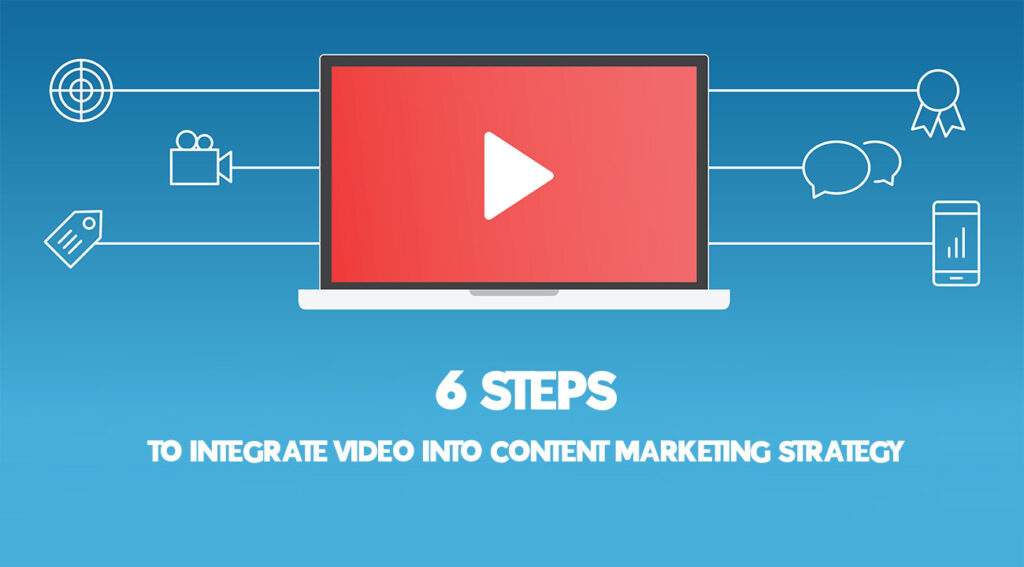To stay in line with the speed of technology, the importance of video marketing is immense nowadays. We all know that no brand can last by using written content and images only – that’s because it is very uninteresting and unengaging in today’s time. Now, consumers are inundated with live streaming, interactive 360° videos, augmented reality, and more! So, it’s high time to integrate your videos with modern content marketing strategies. The following stats are enough to justify this statement –
- Videos have 1200% more shares than text and images combined on social media.
- Videos can hold 55% more attention than text or images.
- A landing page with a video can increase the conversion rate by up to 80%.
- Videos are 84% more convincing than images or text.
Videos have a massive impact on what drives a consumer to buy a product. According to a report, when a consumer discovers a brand from a video advertisement, they later purchase from them. You don’t need to become a rocket scientist to understand the reason behind this. Videos are capable of providing information quickly and retaining viewers’ attention through visual stimulation. Isn’t it better to watch a one-minute-long promotional video than read a 2-page long product brochure?
So, here in this article, we’ll discuss steps on how to integrate more videos into your content marketing strategy.
Steps To Integrate Video Into Content Marketing Strategy
It takes more than uploading a video to YouTube to integrate a video into your content marketing strategy. If you want a good ROI, then you need to stay careful while executing the plan to get the best possible result.

Set Your Goals
The first thing you need to decide is what goals you want to achieve. Do some in-depth research that determines how many videos you’d like to put on your content marketing strategy. Also, it’s important to decide what message your video will contain. Will it be about brand awareness or product information? Even it can be asking for feedback from clients.
Moreover, you need to determine the budget and split them into various sections that are going to be spent on hiring professionals, buying props, transport, locations, etc. So, these aspects need to be carefully thought out before moving to the next step of this process.
Determine Video Types
It’s time to focus on the marketing aspects. Here you’ll decide what type of videos you are going to make. A marketing strategy can include any type of video, for example, Swagbucks has a small video on its landing page that decides how the program works. Here are some video types that you can consider –
- Product Video – Product videos are a good mixture of visuals and highlights of your product’s USP. We usually see these types of videos on various social media as advertisements.
- How-to videos – These are general informative videos that help the customer with tutorials on how to use a product or service.
- Event videos – You can shoot a brand event and post it online with some edits. These event videos are great for building brand authenticity.
- Testimonials – Testimonials are an effective marketing tactic for gaining client trust. Your present customer base will encourage others to try your product/service by explaining the advantages of doing so.
- Webinar – Arranging webinars are a great way to build an image among your industry peers. It also helps to establish your brand as an ideal source of information.
- Expert Interviews – Posting interviews with industry experts will assist you to get credibility. You can post snippets on social media and full interviews on your website, so you’ll have engagement in both ways.
The types of videos you’re about to make are mostly driven by your objectives and the story you want to tell, as well as the platforms on which you want to share them.
It’s no secret that how-to videos are a tremendous hit because they’re so keyword-friendly. For instance, the term “how to produce a podcast” has over 13,000 monthly searches on Google.

Platform Selection
To have a better engagement rate everywhere, you need to cater your content for each social platform. For example, while you can’t upload a 30-minute interview on Twitter, you can post short video snippets from it and then link to the full video on your YouTube channel or another site.
Moreover, social media posts are likely already part of your content marketing strategy, so using videos to complement already scheduled text articles or to promote your brand is an intriguing option.
Many content marketing strategies rely on YouTube because it is a free video-sharing platform. YouTube makes it simple to share videos. And also has a massive daily user base.
Start Small
You need to have a solid start because a poor one can end your entire content marketing strategy. You should start with easily manageable video material that appeals to the widest possible audience. A simple video introduction to your product or service is a good place to start, and it doesn’t have to cost much in terms of time or money.
Stay Mobile
While making plans, it’s important to conduct some research on developing a video marketing plan for mobile devices. More than half of all video views around the world come from mobile phones. As you plan your video content and distribution, this information is important to keep in mind. If you want your content to be viewed by everyone, then you need to optimize your videos for smartphones. Don’t wait for your audience to come to you, go where they are.
Go Live
Nowadays, live videos are incredibly effective for video-oriented content marketing strategies. Doing live videos allows you to interact with your audience in real time and creates an opportunity for your visitor to watch later when they are free. You can share announcements, updates, and thoughts about your products on the live video. Also, remember to record the live video session so that you can post small parts of it later on social media.
Testimonials
As we’ve said earlier, testimonials are an important aspect of video marketing. Testimonials can push your service or product in a positive way and increase the conversion rate up to 89%. This happens because more than 80% of online buyers depend on online reviews. So, you can see why testimonials are so important for inbound marketing.
Ending Thoughts
As long as you and your team know the basics of video production and marketing and come up with a plan for your brand, video integration with a content marketing strategy isn’t a complicated process at all. To make high-quality content, try to get a professional video or content creator on board. You can take advantage of the tips we’ve shared with you.
Needless to say, online videos are one of the most prominent forms of media consumption, and it’s high time to incorporate them. The audience is right there in front of the screen, waiting for your content to be watched, so what are you waiting for?




